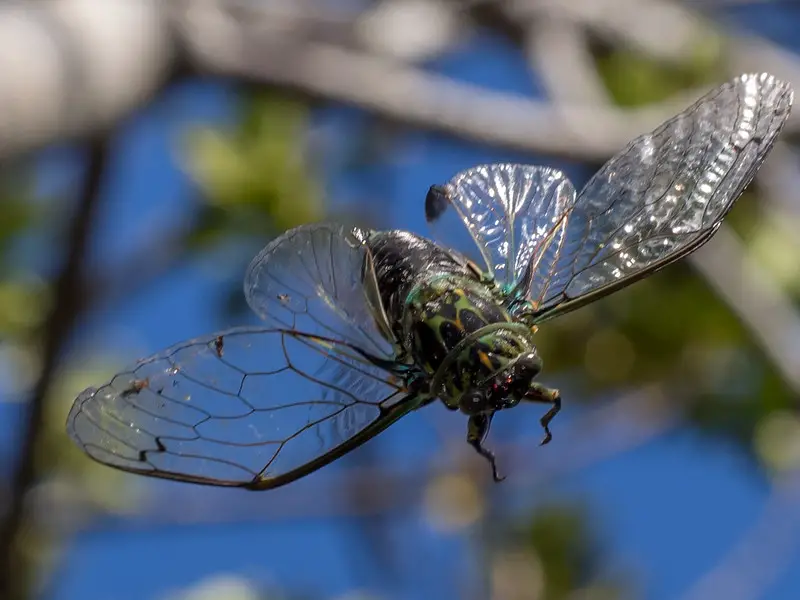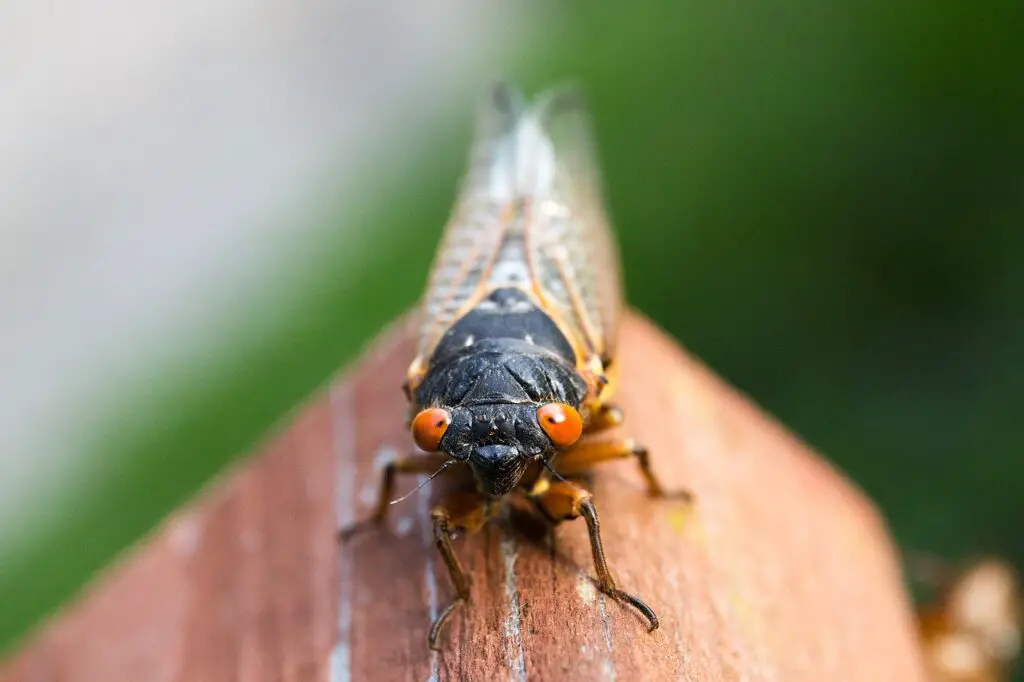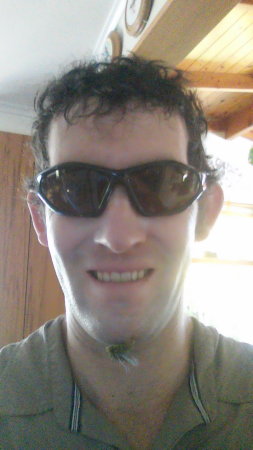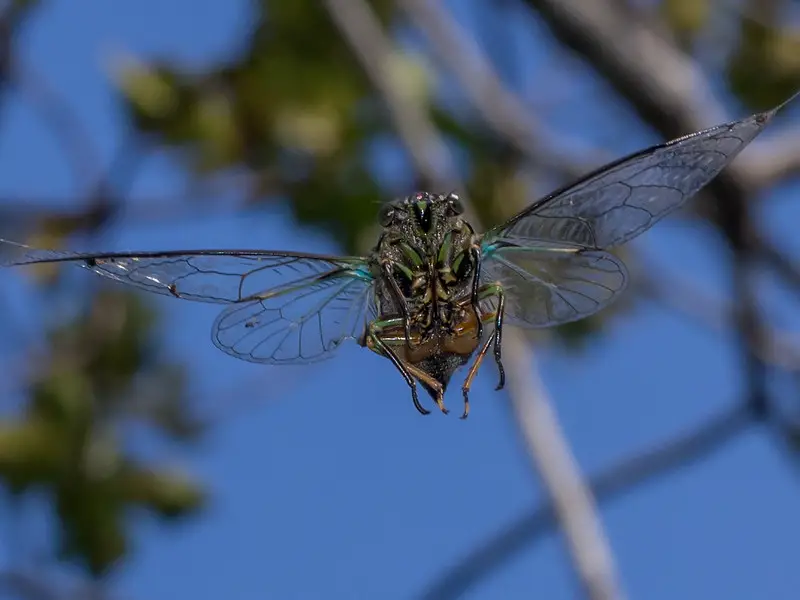I was on the bank of my local river the other day, searching for willow sawfly infestations for a previous article. While I did not find any sawflies, what filled me with excitement was the unmistakable clicks of a cicada.
So, I decided this is a good time to write about my favorite time of year for flyfishing. The cicada hatches and throwing large terrestrial flies to hungry trout.
Best time of year to fish Cicadas for trout?
Trout can and do take Cicada flies at almost any time of the year, that is not because trout are feeding on Cicadas but because they mistook it for something else. Trout are opportunistic feeders at times. So, if there are large terrestrials around, trout will probably show interest in Cicadas.
With that said, I normally do not start fishing cicada flies is a couple of weeks after you start hearing them clicking away. Trout seem to need a couple of weeks to start feeding on cicadas with any intensity.
In the southern states, the first cicadas typically hatch in April, and the hatches continue further north as the soils warm, but in most places the fishing is usually pretty good from June onwards. The exact start date of the cicada hatch is very temperature and location dependent. So yeah, I wait until I hear them before I start fishing with them.
Best time of day to fish Cicadas.
As the temperature warms, the cicadas come to life. I typically start fishing Cicada’s the moment the buzzing begins in the morning. That is probably around 10am but does vary from day to day based mostly on weather.
Cicadas like all insects are cold blooded, so they are not very mobile early morning. Because they are staying still, they are less likely to fall into the water, and my thought process goes that the trout are less likely to be searching for them.
My favorite time to fish cicadas is a warm summer’s day with a slight breeze which helps dislodge the insects from their roosts and to hide some of the splashes from the fly line.
Take water temperature into consideration
Cicada seems to love hot air temperatures. This is in sharp contrast with trout which are very sensitive to warm water. If the water is too warm, trout become reluctant to feed.
So I monitor the water temperature, and if it is much above 67f (19c) I know the fishing is going to be tough and I will search for colder water to fish.
Sometimes, I only get to fish Cicada’s from about 10am to 1pm. During this time the air temperature is warm enough for the cicadas to be active, while the river water is still cool from the night before.
I have also found that spring creeks are a prime location to fish Cicada’s because the water remains cool on even the hottest of summer days. So, the perfect combination of hot air for the cicadas and cold water for the trout can result in a magical day of fishing.
Cold mountain streams, where the water flows from higher elevations are also a great option.
Where to fish cicada patterns
To be completely honest, I cast cicada flies to where I think the trout are feeding. I have caught more trout fishing runs out in the open than casting under overhanging vegetation. So, fish cicada flies where you fish other types of flies.
Yes, Cicadas are more likely to fall into the water from overhanging vegetation, but the presence of some scrub is no guarantee that trout will be feeding in the vicinity.
When comparing lakes vs rivers. I have slightly more luck catching trout in moving water, compared with still water. But cicada flies work anywhere the two species coexist.
I have caught trout in rivers flowing through pasture, meadows, or even stony riverbeds on cicada flies. In these cases, I am not sure if they were feeding on cicadas getting washed downstream, or if they were mistaking the cicada fly for a grasshopper or other terrestrial that live in tall grass.

Bring multiple cicada patterns – and my favorite patterns.
I like to bring multiple cicada, and large terrestrial patterns when cicada fishing.
Trout have excellent eyesight and are quick to learn. If I make a mistake on my first presentation, maybe I miss the strike or there was too much drag trout are very likely to reject the same pattern on repeat presentations.
This is why I typically change to a similar but different pattern. The simple act of changing to a different pattern can be enough to convince a trout to take it again. At times, mostly due to mistakes on my part I have had to cycle through 3 or 4 patterns before managing to set the hook.
Best cicada patterns for trout fishing
I like to fish Cicada patterns in #6, although sometimes I will fish slightly larger or smaller. I feel size #10 is typically a bit on the small side for a cicada pattern. While size #2 flies are a bit tricky to cast on most trout fishing fly rods.
Below are my favorite patterns I use when trying to imitate cicadas. I will add, that trout will mistake virtually any large chunky dry fly for a cicada. It really does come down to personal preference.
- Clarks Cicada: Just a good deer hair cicada pattern that floats well and is visible. I like Clark’s Cicada because it is one of the first I used, but virtually all deer hair cicada patterns work well.
- Stimulator: Generalist large terrestrial patterns which trout love. I like mine to have legs. I don,t know if the trout actually care about legs but I certainly favor them.
- Chornobyl Ant: Another excellent generalist terrestrial pattern. They perform very similarly to a stimulator but are foam rather than hair based. Some fishermen prefer to fish the chubby Chornobyl variant due to its thicker dimensions.
- Foam Cicada: I do not have a favorite foam pattern, but there are many and they all float well. I have a slight bias towards natural products so favor deer hair.

Does Cicada fly color matter?
I do not believe matching the fly color with that of the natural insect really matters. Although, cicada flies are available in all colors of the rainbow so it will not hurt to match the colors of your local hatch.
Personally, I do not bother. In the early season, most of my cicadas are light brown, and I readily catch them on an olive colored deer hair cicada.
In the height of summer, large black cicadas dominate. I still readily catch trout on the same olive colored cicada fly.
Everyone’s experiences differ, but I personally believe the trout are taking the dark silhouette, rather than noticing any specific color.
Best rigs for fishing cicada’s
I fish cicada’s two main ways. By themselves as a dry fly, and also as an indicator fly in a hopper dropper rig.
In rivers and streams, I generally just fish the Cicada just like a dry, at the end of a 9ft leader. Due to the weight of the cicada, I like to keep the leader slightly shorter to assist in casting. Otherwise, you might end up with a cicada fly in your chin.

I also use a slightly thicker tippet, ending in about 2x (.009”) line. I use this relatively thick line for a couple of reasons, firstly the heavier line assists in turning over the cicada fly allowing for a straighter presentation.
Cicadas are large insects, so they do not require precision casting. Splashing them down a bit heavy does not hurt, a heavy landing can even grab a trout’s attention from further away.
I also discovered that micro drag can often be ignored. Upon hitting the water Cicada’s often buzz around on the surface, so the trout expect them to move independently of the current. So getting the perfect drift is less important than usual.
When fishing lake margins, I often like to use a cicada fly as an indicator and suspend a nymph a couple of feet below (Hopper dropper rig). It can be a bit cumbersome to cast, but it is a very effective combination during the summer.
Cicada flies work very well in combination with a dropper, they are a large chunky fly with a lot of buoyancy.
Cicadas also represent a large meal for trout, so they often swim a reasonable distance to inspect one. The advantage of the dropper is that often trout will decide not to take the cicada but will grab the much safer nymph as they drop back towards the bottom.
Dead drift or impart movement into cicadas?
After a cicada fly hits the water, should you let it float with the current or try and impart a little movement? Maybe send some vibrations down the line.
I have discussed this topic with other cicada fishermen, and there does not seem to be an exact answer.
Many cicadas do buzz around on the water surface, so this makes it tempting to try and work some vibrations into the natural.
I have fished cicada in both ways, and in general. I do not believe imparting movement does much to help. The landing impact is typically sufficient to grab a trout’s attention.
Trout also readily take cicadas just floating there, and any additional movement risks just warning the trout of your presence.
In saying that, I have had trout chase after and take cicadas as I strip them back towards the bank as I get ready for my next cast.
Once when getting reading for my next cast, I did a quick roll cast to recover my line, at that moment a large brown attempted to grab the cicada only for it to fly out of the water.
That trout went absolutely ballistic as it angrily searched its surroundings for its lost meal. It eventually found the fly again and smashed it a second time.
Trout continue to take Cicada well into the fall
The cicada hatch during the summer can bring some very exciting fishing, but most hatches over last for a few weeks. They are over way too soon. Luckily, I have noticed trout will continue to take cicada for several weeks after the naturals have disappeared.
So I continue to fish cicadas well after their chipping sounds have stopped. Trout still seem to remember them and will eagerly grab at one despite being out of season.

